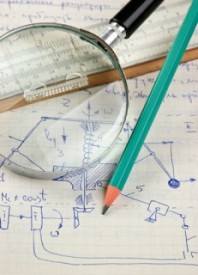
Collision detection and avoidance are crucial components in any moving system that needs to interact with its environment in some “intelligent” way. Examples of such systems are numerous and include, e.g., mobile robots for transportation at hospitals, robot manipulators working in cooperation with humans, and domestic service robots.
ROBOTNOR has expertise within several areas of collision detection and avoidance for robots:
- Model-based collision detection: 3D models of robots and their environment are updated in real-time in order to calculate the shortest distance between a robot and its environments. This way, possible collisions are detected before they occur.
- Sensor-based collision detection: Several sensor technologies have been utilized at ROBOTNOR for this type of proximity detection and collision avoidance. Such sensors include time-of-flight (TOF) cameras, laser range finders, acoustic sensors, and force-torque sensors. Methods for using such sensor data (e.g., through environment representation) have been developed at ROBOTNOR.
- Path planning and collision avoidance: ROBOTNOT includes expertise on path planning and control with collision avoidance for both ground, sea and air vehicles. The methods differ in utilizing either model-based, sensor-based, or a combination of these two as basis for path planning and control.

